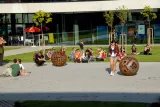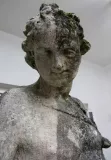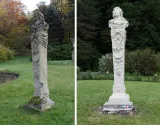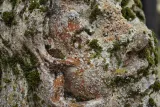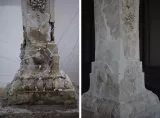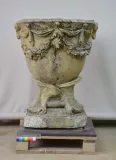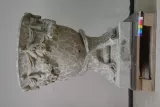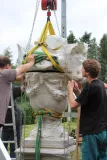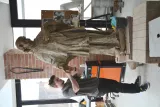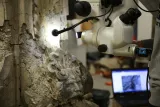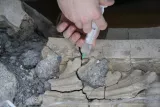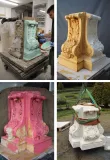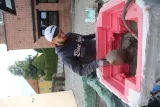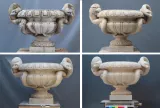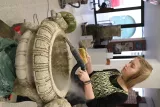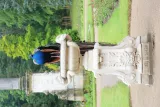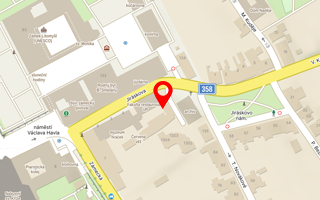- Carried out in: 2012-2020
- Location: The area of the Konopiště Castle – Rose garden
- Origin: the end of the 17th century/the end of the 19th century
- Material: Biodetritic limestone/artificial stone
- Executed by students: Radka Nádvorníková, Jana Doležalová, Lukáš Brotánek, Václav Douša, Aneta Kokstejnová, Zuzana Auská, Jiří Škarvada, Klára Teturová, Viktor Gallistl, Jakub Balcar, Marek Knot, Veronika Mašíková
- Teaching supervision by: doc. Jiří Novotný, doc. Jakub Ďoubal Ph.D., MgA. Petr Rejman MgA. Petra Zítková
- Chemical-technology survey by: Ing. Petra Lesniaková, Ph.D., Ing. Renata Tišlová, Ph.D.
The cooperation between the Faculty of Restoration and the castle of Konopiště commenced in 2012. The aim of the project was the conservation treatment of the sculptural decoration of the castle grounds.
At the end of the 19th century, Archduke Franz Ferdinand of Austria bought the castle. He had it rebuilt it in historicist style and turned its surroundings into a landscape garden. On the grounds of the former Baroque garden, he established the Rose garden accompanied by greenhouses. His vast collection of artefacts was situated into the castle gardens. He either had inherited the artefacts from his Italian ancestors or he had added them to his collections because he was an enthusiastic collector. He chose to place historic sculptures there, chiefly made of limestone; next to them, he exhibited modern artworks made of the then-popular material – artificial stone.
At the beginning of the 21st century, both the types of artworks carried signs of material damage. Their surface had been treated several times and the missing parts had been replaced. The surface coating had been mostly washed out or removed, leaving the surface of the limestone less porous. The surface was severely affected by biological growth. There were many additions modelled in a thin layer, but their durability was coming to an end. The stone underneath them was seriously damaged. There were extensive losses of the modelled parts which had been treated in the past in more or less satisfactory ways. Many of the artworks made of artificial stone were in critical condition. The Portland-cement-based material gradually decayed, chiefly due to the cracks which had occurred as early as the time of its creation. The continuous effects of the leaking water and freeze-thaw cycles resulted in enlarging the cracks and later in the creation of a network of cracks throughout the fabric causing extensive losses of the fabric. A unifying coating had been repeatedly applied to these objects as well.
The first phase of 2012/13 encompassed conservation works on the first sculpture and the artwork made of artificial stone, which represented a demanding task in terms of the technology of conservation. In that way, a conception was designed so that the conservation of the other sculptures of the set could be carried out a few years later.
The technology to preserve the decayed material had to be improved, especially for the conservation of a stele made of artificial stone. First, the material was consolidated using dealkalized sodium silicate infusions to guarantee deep penetration. Subsequently, the cracks were filled with plasticized Portland cement applied by pressure injection. Finally, a unifying coating was applied to the objects.
It was necessary to remove biological growth as well as the aged and inappropriate putty from the sculptures. Consolidation using organosilicon compounds followed while a more compatible nanosuspension of calcium hydroxide CaLoSiL E25 was selected for the consolidation of the newly-executed interventions. The complete conservation treatment included an extensive reconstruction of the missing parts which were made of artificial stone according to the archive materials. It was a particularly difficult task to preserve the later-added pedestals which had not been made of quality material and thus, they were in disastrous condition. They were finally replaced with new concrete casts for which moulds had to be made first.
By 2020, the Faculty of Restoration had already completed four limestone sculptures and six artworks made of artificial stone. In the following years, the cooperation is going to continue. The conservation treatment of other sculptures represents new challenges in dealing with the material.
